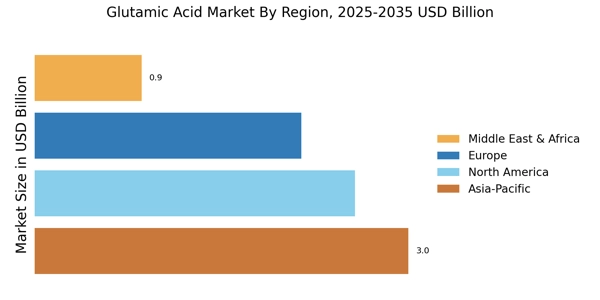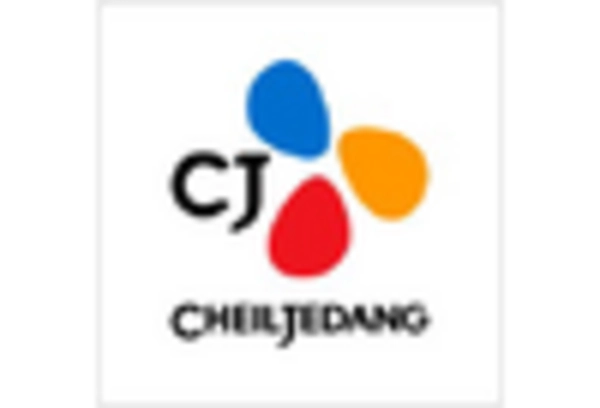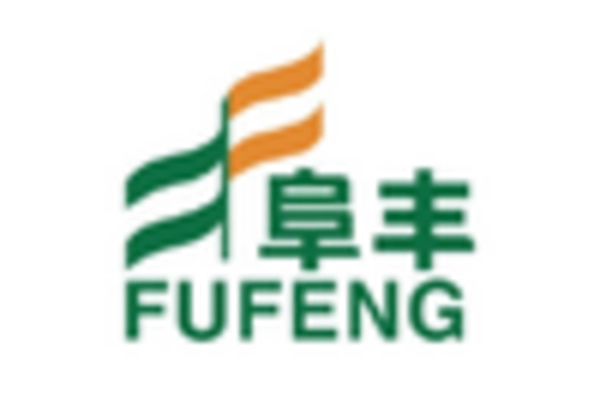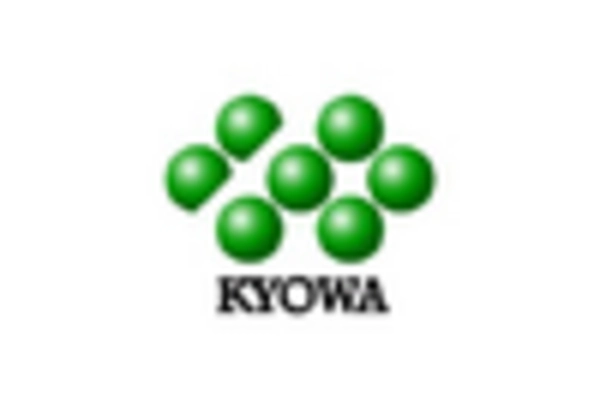The Glutamic Acid Market is characterized by a dynamic competitive landscape, driven by increasing demand across various sectors, including food, pharmaceuticals, and animal feed. Key players such as Ajinomoto (Japan), Evonik Industries (Germany), and CJ CheilJedang (South Korea) are at the forefront, each adopting distinct strategies to enhance their market positioning. Ajinomoto (Japan) focuses on innovation in product development, particularly in enhancing the umami flavor profile in food products, while Evonik Industries (Germany) emphasizes sustainability through eco-friendly production processes. CJ CheilJedang (South Korea) is expanding its global footprint, particularly in Asia, by leveraging strategic partnerships and localizing its manufacturing capabilities, which collectively shapes a competitive environment that is increasingly focused on innovation and sustainability.
The business tactics employed by these companies reflect a concerted effort to optimize supply chains and localize manufacturing to meet regional demands. The Glutamic Acid Market appears moderately fragmented, with several players vying for market share. However, the collective influence of major companies like Fufeng Group (China) and Meihua Group (China) indicates a trend towards consolidation, as these firms seek to enhance their operational efficiencies and market reach.
In August 2025, Fufeng Group (China) announced the opening of a new production facility in Inner Mongolia, aimed at increasing its glutamic acid output by 30%. This strategic move is significant as it not only enhances Fufeng's production capacity but also positions the company to better serve the growing demand in the Asian market, particularly in food and feed applications. The investment in local production capabilities is likely to reduce logistics costs and improve supply chain reliability.
In September 2025, Evonik Industries (Germany) launched a new line of sustainable glutamic acid products derived from renewable resources. This initiative underscores Evonik's commitment to sustainability and innovation, aligning with global trends towards environmentally friendly products. By diversifying its product offerings, Evonik aims to capture a larger share of the market that increasingly prioritizes sustainability in purchasing decisions.
In July 2025, CJ CheilJedang (South Korea) entered into a strategic partnership with a leading biotechnology firm to develop advanced fermentation technologies for glutamic acid production. This collaboration is poised to enhance production efficiency and reduce costs, thereby strengthening CJ CheilJedang's competitive edge in the market. The partnership reflects a broader trend of companies seeking technological advancements to improve their operational capabilities.
As of October 2025, the competitive trends in the Glutamic Acid Market are increasingly defined by digitalization, sustainability, and the integration of artificial intelligence in production processes. Strategic alliances are becoming more prevalent, as companies recognize the need to collaborate to innovate and enhance their market positions. Looking ahead, competitive differentiation is likely to evolve from traditional price-based competition to a focus on innovation, technological advancements, and supply chain reliability, as firms strive to meet the changing demands of consumers and regulatory environments.


















Leave a Comment